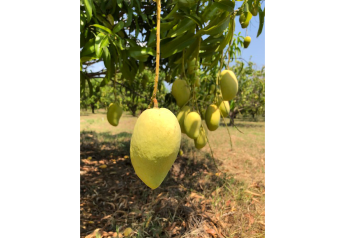COVID-19 changes onion business, marketers say

Even among health experts, the mortality rate for those who contract the new coronavirus COVID-19 remains a matter of debate, but some approximations range from 1% to 5%.
What the pandemic has done to the onion industry is more quantifiable, according to Greg Yielding, chief executive with the Greeley, Colo.-based National Onion Association.
“It has affected it a lot because we’ve lost half the market,” Yielding said.
That’s because roughly half of the U.S. onion crop typically winds up in foodservice — primarily the restaurant sector, which the pandemic and its resultant stay-at-home and social-distancing orders have largely stopped cold.
“When you lose that, there’s a big impact,” Yielding said. “There’s a lot of onions that would have been gone, from a storage perspective.”
The impact is visible in a drastic reduction of weekly truckloads of onions over a five-week period, said Dan Borer, general manager of the Walla Walla, Wash., office of Greencastle, Pa.-based Keystone Fruit Marketing Inc.
“It went from 3,500 loads to 2,900 to 1,500, 1,500 and, last week, 2,000, which is still below the average of 2,500 loads,” he said April 24.
“That’s total usage of dry onions. So, you see that supply-demand curve is a just a freak-out for grower-shippers.”
Normally, storage supplies, primarily from the Pacific Northwest, would be gone by May, and spring crops from Texas, Georgia and California would be hitting the marketplace and finding homes in restaurants and institutions, marketers say.
Related content: Coronavirus (COVID-19) News Updates
That didn’t happen this year, and it has created a growing glut of product for a smaller network of buyers, Yielding said.
“A lot of spring onions, and bigger onions, go to foodservice,” he said.
“Probably over 40% of (the processing market) is lost now, because most or all of it goes to foodservice. So, it’s not a good situation, and we’re working on some other angles for some relief for onion growers.”
Not all product will go to waste; some has made its way to food banks, Yielding noted. However, he added, that is not a panacea for an industry so dependent on foodservice buyers.
“However noble they may be, to take all this produce and put in little boxes to give to people for food banks is not going to work; it’s not going to bring any monetary relief,” he said.
The association is working on possible solutions with the U.S. Department of Agriculture to help growers navigate through the fallout of the COVID-19 pandemic, Yielding said.
“We’re going to be working some plans with USDA real soon,” he said.
“The food bank deal is good, and certainly some can go to that, but the way they’ve got that set up, it’s not going to help very many producers at all.”
Retail is an available outlet, but distribution systems have, at times, had as much product as they can handle, Yielding said.
“The distributors got everything they needed after that mad rush in March,” he said.
“All the retail was just gone and people had to replenish and it backed up and then just stopped. Now, it’s steady but, here again, it can’t work out that much volume as retail and foodservice at the same time. And, in some parts of the country, you still have problems getting the product where it needs to go. And on the East Coast, people have to wait in line to get in stores.”
COVID-19 has not affected onion export markets, simply because of timing, Yielding said, noting that prime destinations in Asia got a lot of product late in 2019, before the pandemic exploded.
“We export about 6-7% of U.S. onions, and most go to Asia,” he said. “That’s over with right now.”
Mexico was finishing its onion season by late April, and that market, as well as Canada, remained open to U.S. onions, Yielding said. He also said onions go to Panama and other markets, “wherever they are needed.”
“It hasn’t affected exports that much,” he said.
Grower-shippers said they were doing what they could to deal with the situation.
“We’re all working to cope as best we can with the challenges of COVID-19,” said Devin Lybbert, marketing director at Hermiston, Ore.-based River Point Farms.
“At River Point Farms, we’ve been vigilantly adhering to hygiene, social distancing, and other mitigation measures to minimize risks to our employees and customers.” Attitudes remained positive, Lybbert said.
“We know people are struggling during this difficult time, but we remain optimistic,” he said.
“We’re fortunate to work in agriculture, to be part of helping people enjoy good food. While the market is unpredictable right now, we know we can weather this storm together.”
Suppliers have had to adjust to consumer responses to the pandemic, at least temporarily, said Tony Huizenga, national sales manager/onion buyer with Friesland, Wis.-based Alsum Farms & Produce.
“The coronavirus pandemic is disrupting food distribution, marketing and changing consumer buying patterns,” he said.
“Consumers initially rushed to grocery stores to stock up on staples, including onions, but that seems to be stabilizing in the first couple weeks of April.”
Initially, Alsum experienced three times the amount of onion orders as it had a year earlier in mid- to late March, due to “panic shoppers” flocking to retail stores,” Huizenga said.
“There’s been a drastic shift and reduction for foodservice, with Safer at Home orders in place across the country halting these restaurants to take-out/curbside-only options,” he said. “Additionally, reduced consumer income will also impact buying decisions at retail in the weeks ahead.”
The pandemic caused onion sales to surge, said Rachel Atkinson-Leach, brand and category manager with Bancroft, Wis.-based Russet Potato Exchange Inc.
“The two weeks prior to the stay-at-home order across the country showed onion dollars were flat versus year ago; however, during the pandemic, onion sales skyrocketed to the No. 2 vegetable item in sales growth behind potatoes, showing growth of 52%, compared to the same time period last year,” she said.
RPE continued to see the trend stay 30% or more above normal weekly buying trends, Atkinson-Leach said.
“Onions are an ingredient in a variety of different types of recipes and cultures and, with the trend moving to more cooking at home, onion sales should stay above normal at least for the next few weeks,” she said.
However, things won’t change dramatically for the positive until restaurants start taking product again, and that change likely will be gradual, Keystone’s Borer said.
“One thing I hear is it’s not going to be a switch; it’s going to be like a dial,” he said.
“Some sectors of the country will come back faster, but we don’t know what comeback means. For buying markets? Institutional? It sure doesn’t sound like it’s going to happen at once.”







